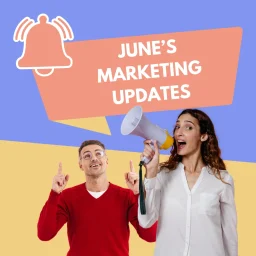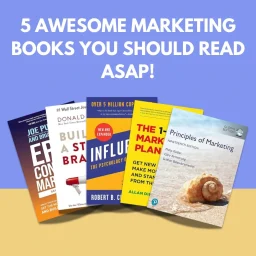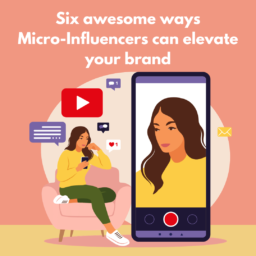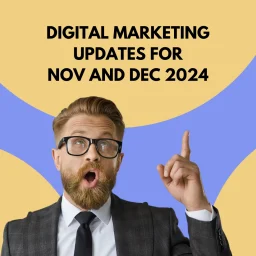Marketers love their jargon
One week into your first or next marketing role and I will bet you £5 that you’ll come across a dozen or so, often two or three-letter acronyms. If you’ve worked in marketing before then you’ll likely know what a lot of them mean, but if you haven’t, you’ll have the awkward moment of having to ask what those six code names mean on that single line of your Manager’s email.

Here’s your marketing acronym cheatsheet
As we work in marketing apprenticeships and some of our learners may be brand new to the subject, we wanted to put together a list of 30 commonly used marketing jargon so that you can hit the ground knowing your CTRs from your SEOs, and KPIs. Here we go…
Let’s begin… **takes a deep breath**
1. SEO – Search Engine Optimisation: The practice of optimising your website to rank higher in search engine results, thereby increasing organic (non-paid) traffic. This is done using various techniques like keyword research, getting backlinks, optimising pages for viewers, etc.
2. SEM – Search Engine Marketing: A broader term that encompasses SEO but also includes paid advertising on search engines like Google Ads.
3. PPC – Pay-Per-Click: A digital advertising model where advertisers pay a fee each time their ad is clicked. Commonly used in platforms like Google Ads. Sometimes people refer to paid social ads as PPC as well.
4. CTR – Click-Through Rate: A metric (statistic) that measures the percentage of people who click on a specific link or ad after seeing it. CTR is used to assess the effectiveness of online ads, email marketing, etc.
5. ROI – Return on Investment: A financial metric used to evaluate the profitability of marketing campaigns. It compares the gains from the campaign to the costs. This is a super important one!
6. CPM – Cost Per Mille (Thousand): The Latin word for 1000, fancy. A pricing model in advertising where advertisers pay for every thousand impressions (views) of their ad, regardless of clicks.
7. CRM – Customer Relationship Management: A strategy and software system used to manage and analyse customer interactions, improving customer engagement and retention. Basically a database of customer information.
8. KPI – Key Performance Indicator: Ah, the dreaded KPI. Metrics that help businesses track and evaluate progress towards their marketing goals, such as website traffic, conversion rate, or sales. They’re also how you’ll often be judged as a marketer.
9. B2B – Business-to-Business: Marketing strategies and activities focused on selling products or services to other businesses rather than individual consumers.
10. B2C – Business-to-Consumer: Marketing aimed at selling products or services directly to individual consumers. Yes, it’s very different to B2B.
11. CTA – Call to Action: A prompt or message that encourages the audience to take a specific action, such as “Buy Now” or “Sign Up.”
12. CMS – Content Management System: A software platform used to create, edit, and manage digital content on websites, blogs, and other online platforms.
13. SERP – Search Engine Results Page: The page that displays the results of a search query on a search engine like Google.
14. UX – User Experience: The overall experience that a user has when interacting with a website, app, or product. Good UX design is crucial for customer satisfaction.
15. CPA – Cost Per Acquisition: A metric that calculates the cost of acquiring a new customer through marketing efforts. Typically associated with digital marketing channels like PPC and email marketing.

16. CAC – Customer Acquisition Cost: A more generalised term. Very similar to the CPA above. It’s the total cost incurred to acquire a new customer, including marketing and sales expenses.
17. A/B Testing – A method of comparing two versions (A and B) of a webpage, ad, or email to determine which one performs better in terms of user engagement or conversion.
18. USP – Unique Selling Proposition/Point: A distinctive feature or benefit that sets a product or brand apart from competitors and influences consumer purchasing decisions.
19. GA – Google Analytics: A web analytics tool by Google that helps track website traffic, user behaviour, and other key metrics. It’s likely one of the most widely used analytics solutions out there.
20. WOM – Word of Mouth: Refers to the spread of information or recommendations about a product or service through personal conversations and social networks.
21. CRO – Conversion Rate Optimisation: The process of optimising a website or landing page to increase the percentage of visitors who take a desired action, such as making a purchase or filling out a form. This is a slightly more specialised one.
22. CTM – Click-to-Message: A feature that allows users to click on an ad or link to initiate a text message conversation with a business. It’s used to facilitate customer inquiries and communication.
23. CAC – Customer Advocacy Campaign: Slightly less common but worth knowing. A marketing initiative aimed at encouraging satisfied customers to become brand advocates who promote the product or service to others.
24. UGC – User-Generated Content: Content created by customers or users, such as reviews, testimonials, and social media posts, which can be leveraged by brands for marketing purposes.
25. CPL – Cost Per Lead: A metric that calculates the cost of acquiring a new lead, often used in digital marketing campaigns. This is slightly different to CPA in that it’s just a lead, not a conversion, yet.
26. AIDA – Attention, Interest, Desire, Action: A classic marketing model that outlines the stages a customer typically goes through in the purchasing process, from getting their attention to taking action.
27. ESP – Email Service Provider: A company or platform that offers email marketing services, including email creation, delivery, and tracking.
28. AOV – Average Order Value: The average amount spent by a customer in a single transaction, used to assess the overall revenue generated from sales.
29. ROAS – Return on Ad Spend: A super popular one in marketing agencies. The metric evaluates the effectiveness of advertising campaigns by measuring the revenue generated in relation to the advertising costs.
30. CLV – Customer lifetime value: The value that is associated with the amount of money a single customer will generate for a business over their lifetime.
So there you have it, 30 marketing jargon busters
We’ll take a break there. There are just thirty acronyms and we’re bound to have missed some out. We’ll likely try to build on this list as we go but I’m not sure anyone would want to read another two million bullet points.
Why not just learn these and more on an apprenticeship?
Here comes the slightly salesy bit. On our marketing apprenticeships, you’ll likely end up learning about all of the above and more. Don’t worry, we don’t test you on them all like some nightmarish school classroom. On an apprenticeship, you’ll learn and have experience dealing with a lot of the above activities, data, and tools as part of your job and you’ll learn about them over a period of 12 to 15 months. So, if you’d like to learn more about our marketing apprenticeships head over to our programmes page to find out more.
Why not sign up for our monthly newsletter? Go on, you know you want to…
If you found this content useful you’re in luck. We create content like this regularly and if you’d like to receive updates on marketing news, articles, and events, then we’ve got your back. Simply complete the form below and we’ll keep you in the loop. Don’t worry, they’re not sales emails.
















